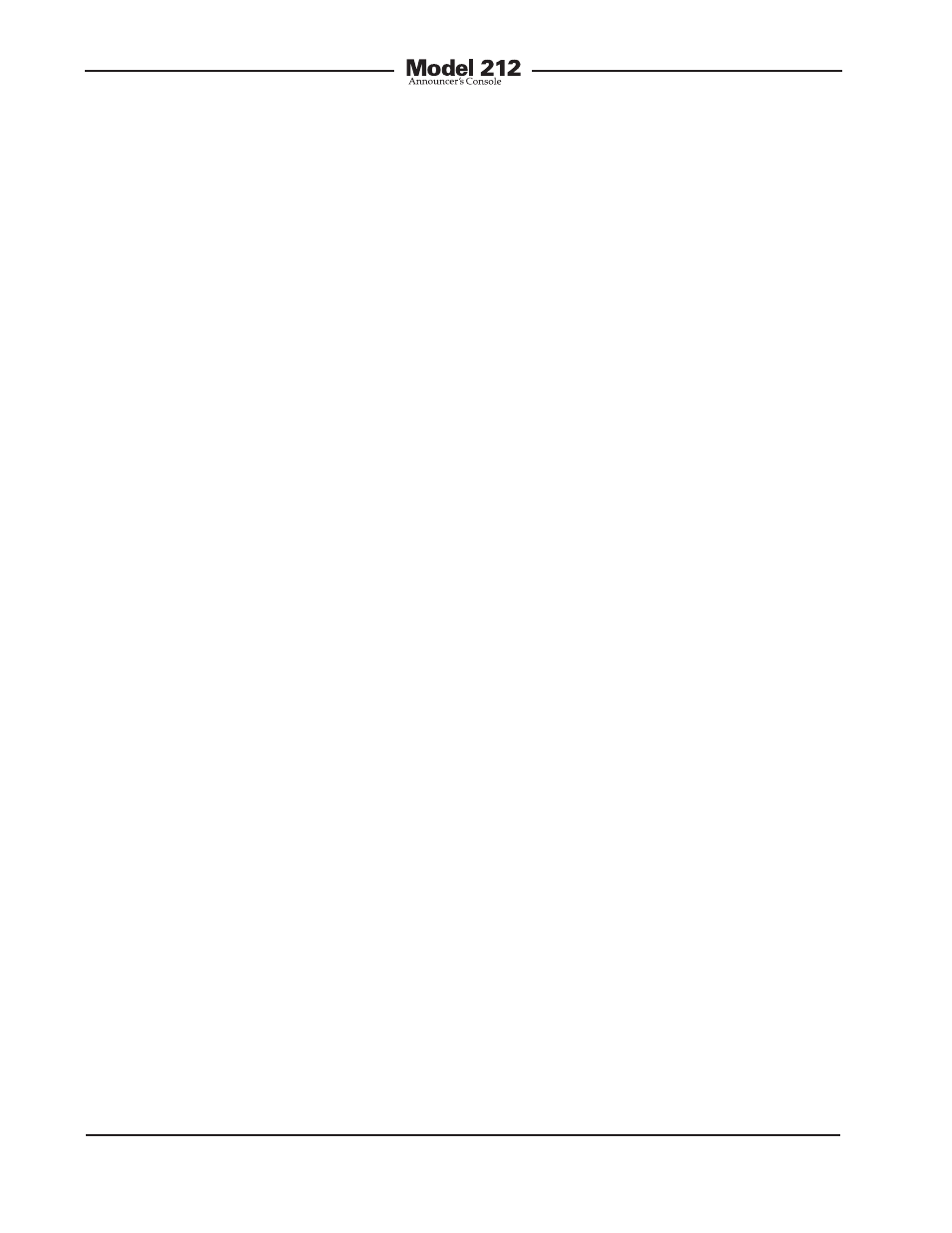Aes3id input, Optional aes3 input, Bidirectional digital interface – Studio Technologies M212-00151 User Manual
Page 12

Issue 2, June 2006
Model 212 User Guide
Page 13
Studio Technologies, Inc.
some Model 212 applications the AES3
output will be implemented using a 3-pin
male XLR-type connector installed in the
back panel. Other applications may use a
multi-pin connector, such as the Neutrik®
EtherCon® version of the 8-pin RJ45 jack.
Note that the signal coming out of the
AES3 output will be identical to that com-
ing out the Model 212’s AES3id output.
The same content will be transmitted at
the same bit depth and clock rate. For
full isolation separate circuitry, including
matching transformers, is provided for the
two outputs.
AES3id Input
The AES3id input can be used to connect
digital audio signals to the Model 212.
The two audio channels associated with
the interface will serve as cue sources for
the stereo headphone output. The input,
physically a BNC connector located on
the Model 212’s back panel, allows a
depth of up to 24 bits to be supported;
however anything in the range of 16 to
24 bits will work correctly. The input is
“self-clocking” so that compatibility with
virtually any AES3id source should be
possible. It’s expected that in most cases
the Model 212 will be used in professional
audio environments where the sample rate
will be 48 kHz. However, any source with
a sample rate from 32 to 96 kHz will also
work correctly.
For the AES3id input to be active a con-
figuration setting must be correctly made.
This topic is discussed in detail in the
configuration section of this user guide.
It’s also important to note that the selected
digital input source will also serve as the
clock source for the Model 212’s digital
outputs.
Optional AES3 Input
Circuitry contained within the Model 212
allows a technician to add support for a
standard AES3 input. This type of interface
allows two channels of digital audio to be
received over a balanced, transformer-
coupled, 110 ohm circuit. In some Model
212 applications the AES3 input will be
implemented using a 3-pin female XLR-
type connector installed in the back panel.
Other applications may use a multi-pin
connector, such as the Neutrik EtherCon
version of the 8-pin RJ45 jack.
As with the AES3id input, for the AES3
input to be active the appropriate configu-
ration DIP switches must be set. And
as with the AES3id input, in additional
to providing cue audio sources for the
stereo headphone output, the AES3
input will also serve as the clock source
for the Model 212’s digital outputs.
Bidirectional Digital Interface
The Model 212 includes a bidirectional
digital interface for use in special applica-
tions. Using a single 75 ohm, unbalanced
connection, two channels of digital audio
can be both sent and received. The two
channels of receive audio can be used
as cue sources for the stereo headphone
output. Bit depths of up to 24 and sample
rates of 32 to 96 kHz are supported. For
the bidirectional digital interface to be
active the appropriate configuration DIP
switches much be set.
The ability of the bidirectional digital in-
terface to send and receive digital audio
signals over one cable makes intercon-
necting the Model 212 with other equip-
ment incredibly simple. For example, the
bidirectional digital interface is directly
compatible with the Riedel Artist® digital
